A simple 4 ingredient 100% whole wheat sourdough bread, made with purely whole grain flour. It's a delicious, flavourful, and wholesome loaf! Using all whole wheat flour makes for a nutty, ultra flavourful loaf, and one that can really hold up to any toppings you can throw at it. Strong cheese, spicy jams, cured meats - anything that might overwhelm a white-flour loaf.
Love using whole grains and alternative flours in your bread? Try our whole wheat sourdough bagels, sprouted grain sourdough, and German sourdough bauernbrot.
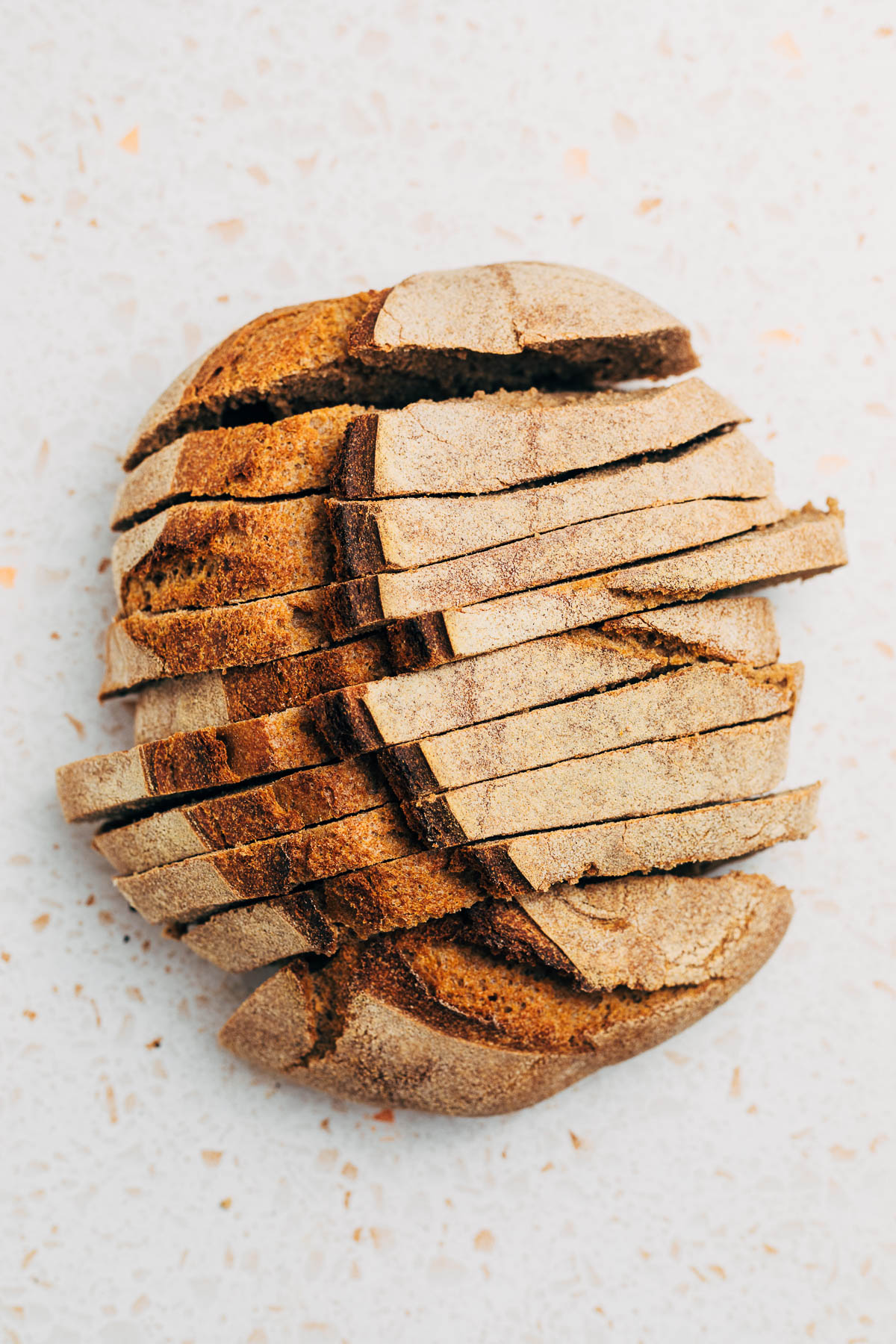
Jump to:
Ingredients

Ingredient Notes and Substitutions
- Flour: if you don't feel confident with all whole wheat flour, you can certainly sub in some all-purpose or bread flour to the mix. We love red fife wheat flour here, for a really excellent flavour, but any kind of WW will work. Use up to 250 grams of white or bread flour for an easier-to-work-with loaf.
Method

Step 1: mix the water, starter or levain, and flour. Set aside to autolyse.
Step 2: mix the salt and remaining water in with the dough and let it rest again.
Step 3: do six rounds of stretches and folds, one every 30 minutes.
Step 4: shape the dough into a boule.
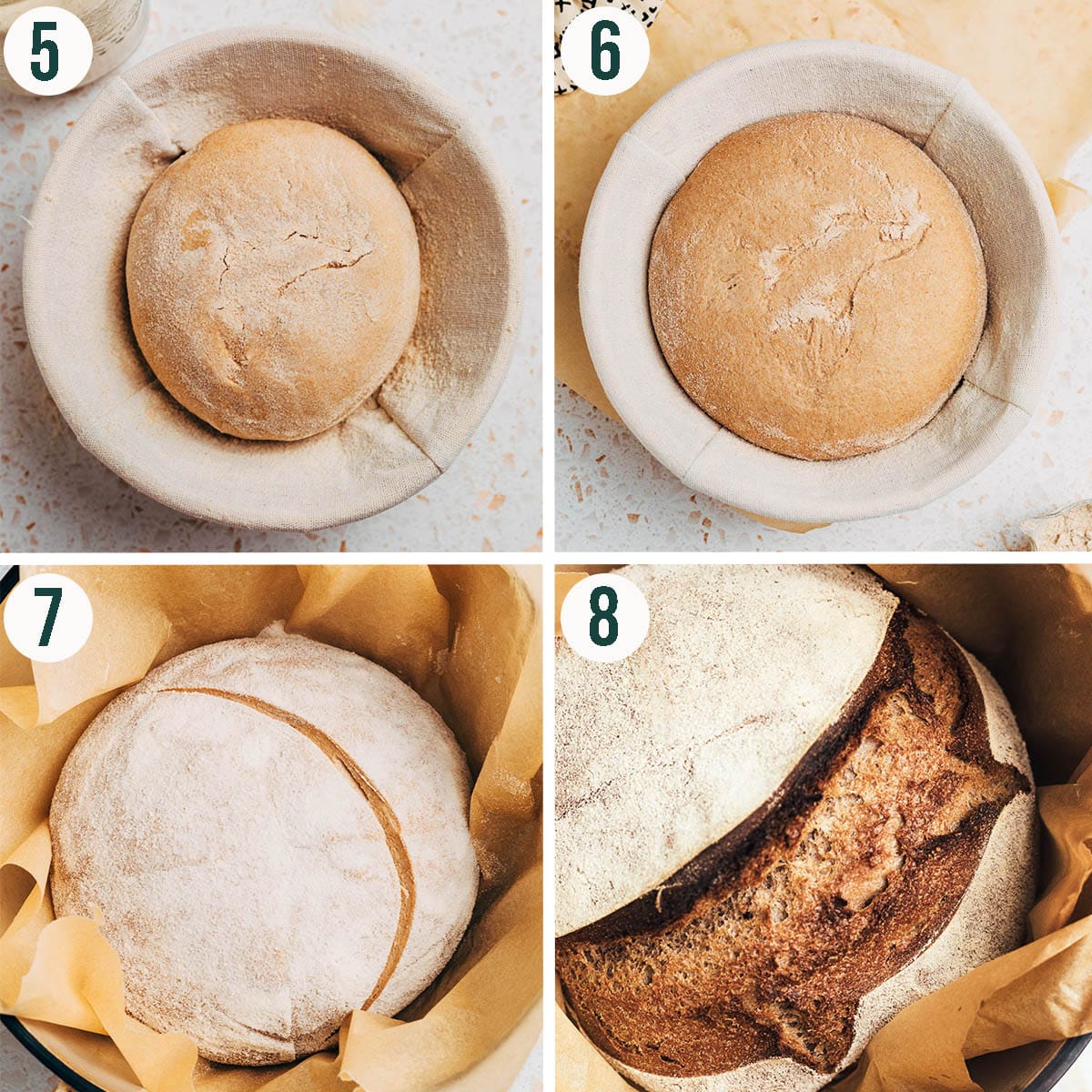
Step 5: place the dough seam-side up in a prepared banneton.
Step 6: refrigerate the dough overnight. It should about double in size.
Step 7: turn the dough out onto parchment paper and carefully place into a preheated dutch oven.
Step 8: bake the loaf for 45 minutes and cool fully before slicing.
Top Tips
- Let it rest: as with any sourdough bread, it must cool completely before slicing to avoid gumminess. With whole grain recipes, this is even more important, and we encourage leaving the loaf for at least 12 hours before slicing.
- Don't skip the autolyse: leaving the dough to rest before adding the salt is an autolyse. This allows the whole grains to soak up some of the water and makes for a dough that's much easier to work with.
- Bake it without a dutch oven: you can bake whole wheat sourdough in a bread tin if you prefer. Follow this recipe, but using the directions for our pan loaf, if you don't have a dutch oven or prefer a square slice.
Recipe Notes
This loaf isn't as light and airy as an all white flour sourdough bread, due to the bran content cutting the gluten strands. If you like a slightly denser loaf, with a tighter crumb (great for sandwiches!) this is your bread.
This recipe isn't more difficult or advanced compared to a purely bread flour sourdough, but it will result in a different loaf. There won't be as a great of an oven spring and the bread won't be as tall - these are typical for whole grain loaves and definitely not a bad thing. As mentioned below, if this is an issue, you can sub a higher gluten flour.
Try adding some nuts or dried fruits to the mix after you've made the loaf once or twice. Cranberries, raisins, walnuts, anything like that is great with the more complex flavour in this recipe!
How to Store
Storage: keep the bread wrapped in a tea towel, in a paper or cloth bag, or in a bread bin to best preserve freshness. It will keep for several days but start to dry out after a couple, and should be toasted then.
Freezing: transfer the cooled loaf to an airtight container and freeze for up to a month, or freeze individual slices. Thaw the loaf at room temperature when you're ready to use. Slices can be toasted directly from frozen.
FAQ
Is whole wheat sourdough bread healthy?
Made only with whole grains, whole wheat sourdough is certainly a healthier option. It's high in fibre and many vitamins and nutrients, and the long fermentation time makes it easier for many people to digest.
Is sourdough bread whole wheat?
Sourdough bread is most commonly made with strong bread flour, a type of white flour with a high gluten content. You can make it with any kind of flour you like, though, including whole wheat.
Is sourdough bread healthier than 100% whole wheat bread?
It depends! While sourdough does have some health benefits that bread made with commercial yeast doesn't, whole wheat bread might still be a better option than white sourdough. Whole wheat sourdough bread is the best of both worlds!
More Great Sourdough Recipes
If you make this Whole Wheat Sourdough Bread recipe or any other sourdough bread recipes on the Baked Collective, please take a moment to rate the recipe and leave a comment below. It’s such a help to others who want to try the recipe. For more baking, follow along on Instagram, TikTok, and YouTube.
Whole Wheat Sourdough Bread
Equipment
- Mixing bowl
- Whisk
- Tea towel
- Banneton
- Measuring cups and spoons or a digital kitchen scale
- Dutch oven
- Parchment paper
- Oven mitts
- Wire rack
Ingredients
- 100 grams sourdough starter or levain
- 500 grams whole wheat flour
- 375 grams water divided (20°C/68°F)
- 10 grams salt
Instructions
Two Nights Before
- Make the levain:Take out about 1-2 tablespoon of your starter from the fridge place it in a bowl. Mix with 50 grams of room temperature water and 50 grams of flour (sifted bread flour, whole grain, spelt, or a combo - whatever you prefer as long as the flour to water ratio is 1:1).
- Cover the bowl with a plate and leave it on the counter to ferment overnight for approximately 8-12 hours. For more information, see this post on how to make levain.
One Day Before
- Once your levain is ready, combine all of it with 350 grams of the water. Add the flour to the water mixture and, and using your hands, mix to combine.
- Once the dough is mixed, cover with a tea towel and let it sit at room temperature for 40 minutes to rest.
- After the elapsed 40 minute of resting time is up, add the salt and remaining 25 grams water. Mix well until combined then cover with the tea towel and let the mixture sit for 30 minutes.
- After 30 minutes, it is time for the first fold.
- Do the first fold:To do this get your hands damp and reach under the dough on the opposite side of the bowl from you. Pull the dough up and over towards you. Repeat this so the side closest to you folds over to the side away from you and the side on your left folds towards you right, and your right folds towards your left. Think of it as wrapping a package. Then, scoop your hands under the ball of dough and flip it over completely. This completes one “fold”.
- Complete 6 more folds (one fold every 30 minutes) for 3 hours total.
- Shaping the dough: Begin by taking the dough out of the bowl and letting it rest on the counter for 20 minutes. Meanwhile, prepare your banneton by dusting it with flour, or layer a clean tea towel in a medium mixing bowl and dust liberally with flour (50-50 wheat flour and rice flour is a great dusting combo).
- Shape your dough making sure you get as much surface tension as possible without tearing the outside of the loaf. Once shaped, turn the loaf into the lined and floured bowl or banneton (top-down, seam side up). Gently flour the top (previously the bottom) of the dough before covering with the edges of the tea towel. Set in the fridge overnight.
Baking Day
- The next day place your dutch oven in the oven and preheat to 260°C (500°F) or as hot as your oven can go, but no higher than 500°F. After the oven has come to temperature, let the dutch oven continue to preheat for another 30 minutes.
- Once the dutch oven has been preheated, take your bread out of the fridge. Gently invert the dough onto a piece of parchment paper that will be large enough to lift your bread into and out of the dutch oven. Gently score the bread with a sharp knife or bread lame.
- Using oven mitts, carefully remove the dutch oven from the oven, take off the lid and then carefully lift the dough into the pot using the parchment paper.
- Using oven mitts, carefully place the lid back on the dutch oven and put the entire dutch oven back into the heated oven. Reduce the heat to 230°C (450°F) and bake for 25 minutes. Carefully remove the lid (be careful of steam) and bake for another 20 minutes with the lid off.
- Remove the pot from the oven and carefully lift out the loaf using the edges of the parchment paper and let cool completely on a wire rack.

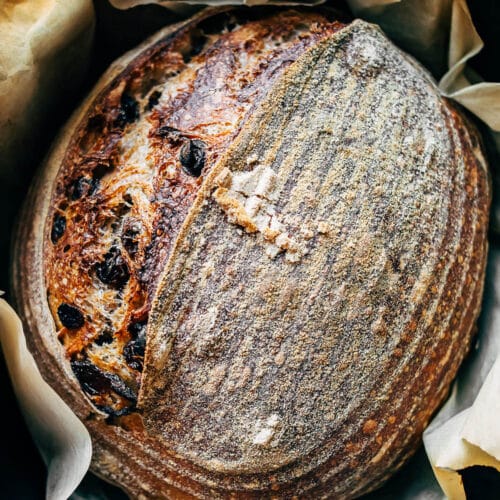
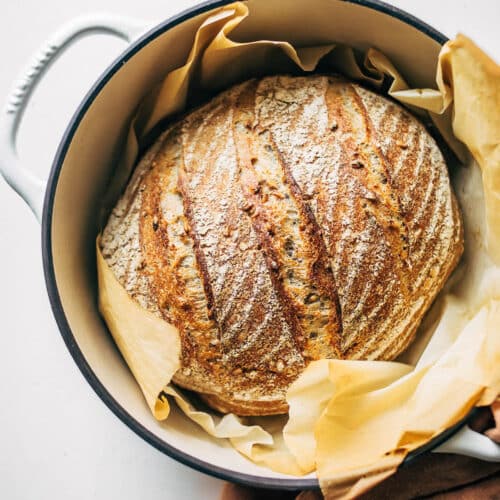
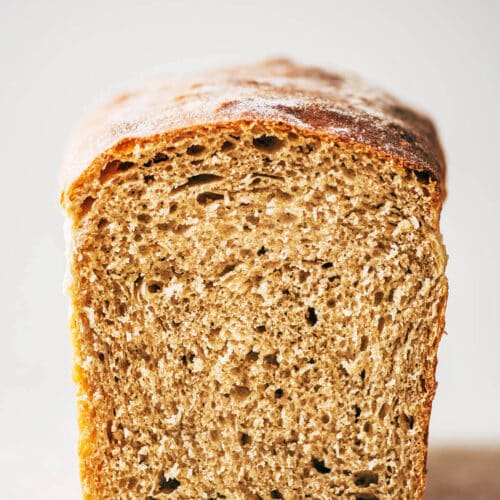
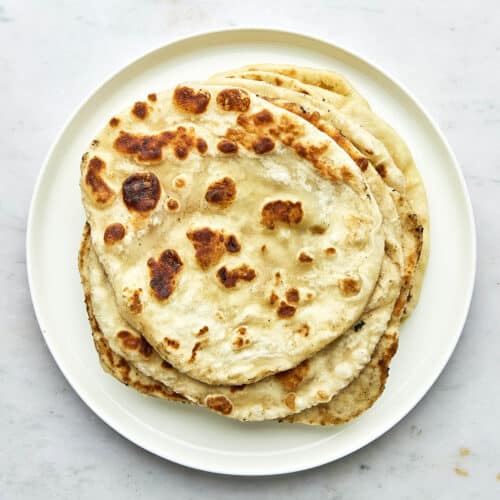

I followed the directions and my bread burned. I suggest a lower baking temp.
Hi Leah, did you remember to turn the oven down before adding the bread? If so, we suggest getting an oven thermometer as most home ovens are inaccurate.
What do you consider room temperature? 3 hours seems like a short bulk fermentation.
Hi Sam, this is Sophie's typical style for sourdough recipes, following the method of the sourdough bakery she worked in for a decade. The bread rises after being shaped.
First time I managed to bake the perfect sourdough following this recipe step by step. I've added some seeds to add a bit of fibre and texture as well
Yum!